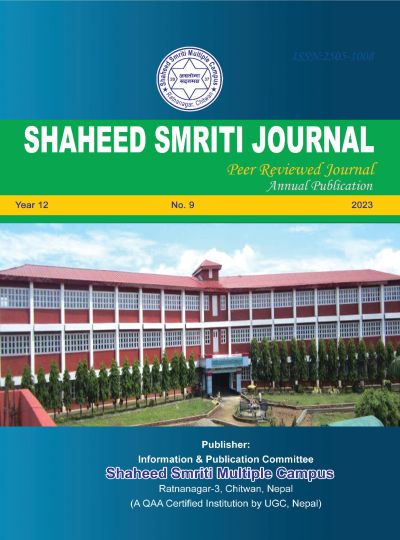Politics of Irony in Owenson's The Missionary: An Indian Tale
DOI:
https://doi.org/10.3126/shaheedsmriti.v12i9.75526Keywords:
Radicalizing Irony, colonial violence, Eurocentric intellectual history, ironic representationAbstract
The Missionary: An Indian Tale is the expression of Sydney Owenson Morgan's tremendous insider knowledge of India as well as of her love and admiration for the country and its people. The novel embodies the ironic mode of storytelling that foregrounds the panoramic celebration of India, a magnificent picture of its landscapes, religious performance, culture and a fascinating depiction of characters named Luxima, an Indian prophetess and a Portuguese monk named Hilarion. He travels to India to spread Christianity with the mission of establishing the colony. The focus on this paper was to analyze how politics of irony had been used in the novel. To substantiate the paper, the researcher had taken help of Beerendra Pandey's article entitled "Radicalizing Irony" who claims that irony as " motor of the entire rhetorical system" (263) that creates "the gap between the said and unsaid" (266) in which the marginalized, repressed, colonized counters and invalidates the center. To accomplish this research article, Owenson's novel The Missionary: An Indian Tale had been used. Similarly, the researcher used "The Missionary Picturesque, 1790-1860" by Pramod K. Nayar, Michael J. Franklin's book "The Romantic Representations of British India" as the tools of analysis. The irony hidden in the texture quotes expose that Luxima, the representative of India and Hindu religion, is reckoned by her belongingness and devotion to her religious practice. The ironic representation of Hillarion undercuts his missionary purpose of converting her into Christianity.




